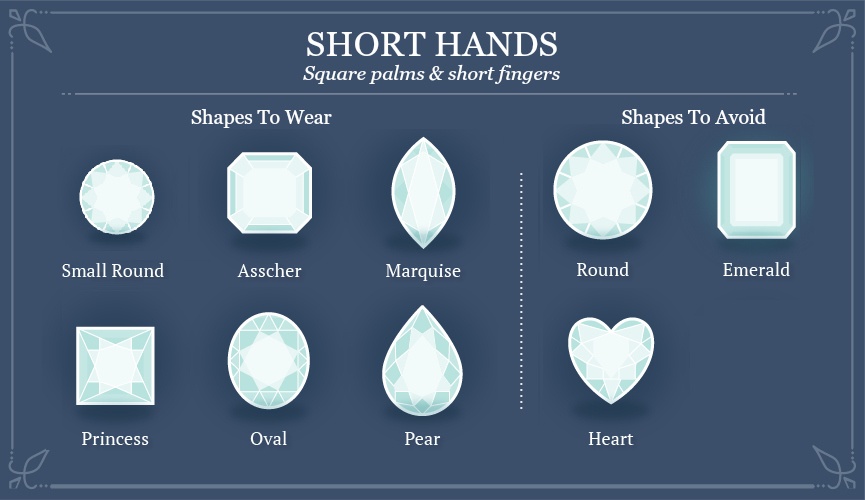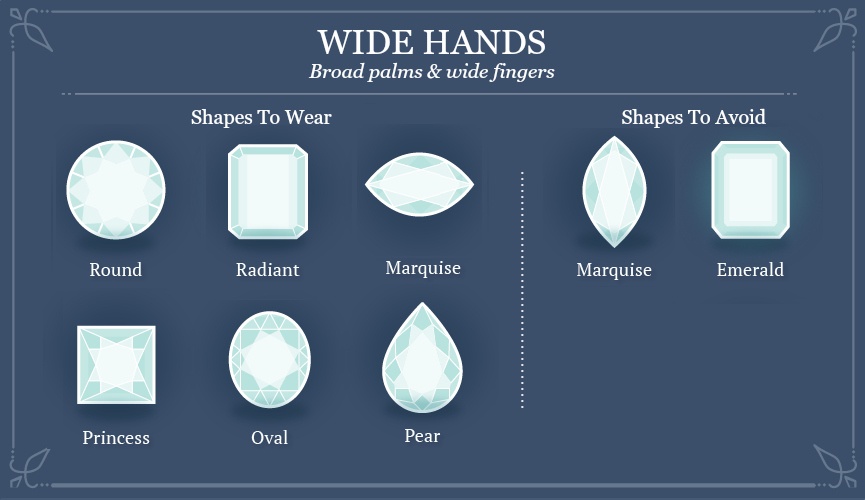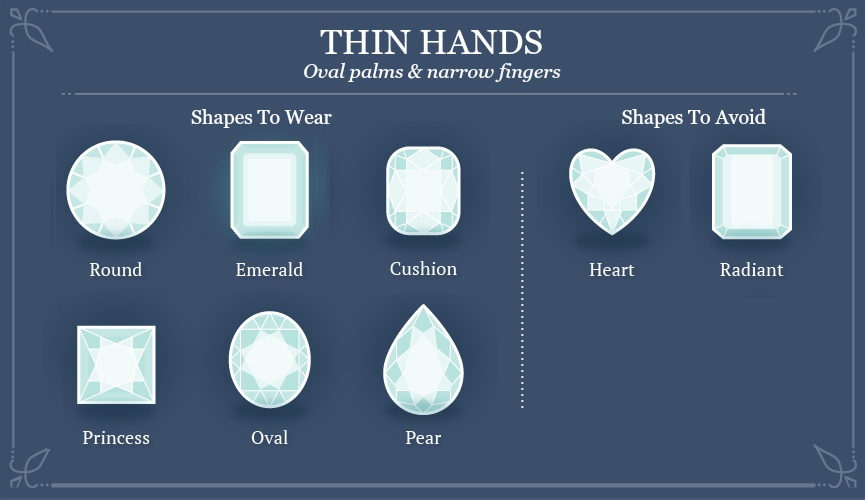Hi there and welcome to our guide for how to buy an engagement ring.
First of all, we do suggest to buy engagement rings together. This is a really beautiful experience to share together and it means that you get the engagement ring that your partner wants.
However, if you want it to be a surprise and propose whilst on a sun kissed, island beach somewhere, you need to do a bit of detective work to make sure you buy the right one!
This means looking at their jewellery box, asking friends and family or you can give us a call or pop in anytime to our shop on Kirkcaldy High Street.
We really do suggest to do this together as if you buy the style you like and it isn't what is wanted, it isn't a great start!!
However, we're across from the old cinema in Kirkcaldy and Richard or Jackie will be happy to point you in the right direction regarding cut, styles and carats and let you see our selection of beautiful engagement rings from classic and contemporary to antique and vintage and everything in between up to modern day.
Our number is 01592 264305.
You can have a look at just some of the different styles and designs we have available on our main engagement rings page over on our Kirkcaldy website here.
We won't go into the 4 C's of Cut, Clarity , as you can read our "4 C's" guide here and did we mention we have a code on that page for 10% off?
We will go into the 5th "C" which is price and the myth started by the jewellery company De Beers (who more or less own the diamond industry) and said that the engagement ring should be 1 to 2 months wages. See what they're trying to do there haha!
We say whatever you are comfortable spending. End of.
So, onto the main meat and potatoes of the guide...

How to buy an engagement ring
"1: Buying from a jeweller
There are alternatives to buying an engagement ring from a jeweller. You could, perhaps, consider buying an antique ring from a shop or auction, but if you want a new ring it is best to visit as many jewellers as possible to gauge what is available on the market.
It is worth remembering that major high-street jewellers are inevitably pricier than London's jewellery centre at Hatton Garden, so if you can visit there - many different shops, all in one street - so much the better.
Consider, too, that jewellers are busiest in the run-up to Christmas and before Valentine's Day. August is traditionally their slowest month, so it may be the best time to ask for a better deal.
Make sure you run this checklist through your head every time you visit a shop:
· Does the store have a long-standing and solid local reputation?
· Do the staff evidently possess a sound gemmological knowledge? Watch out for gratuitous and unexplained jargon.
· Is the shop willing to sell you diamonds with a well-known gemmological certificate? If so, make sure you keep the original rather than a copy.
· Is the shop a member of a trade association? If so, which one?
· Will the shop present a detailed receipt with your purchase? This is key to any possible insurance claim or future repair.
· Does the shop appear to have a busy repairs service? (A good indication of customer trust.)
· Exactly which warranties and guarantees does the shop offer? Read them closely.
· Will the salesperson let you examine the diamond through a loupe and on a white background? If diamonds are viewed on a black background, the eye's perception of colour is hindered.
2: On the web
Buying diamond rings via the internet is not recommended because you should view the diamonds in person so that you can cover all of the above details. If you do choose to do so, only buy cert stones and pay special attention to the delivery terms and possible tax and duty charges if buying from a foreign-based site. But the internet does offer you a chance to do your homework."
See more from the original source here...
We don't suggest buying something that is going to be so precious as an engagement ring online as you really can't tell from the images what it's like or have a really good look at it before you buy. You also need to ask the questions above to the the jeweller personally to gauge trust.
Picking the Perfect Diamond Shape for Her Finger
"When it comes to engagement ring preferences, most women are particular about one crucial element: the shape of her diamond.
There are ten basic cut shapes for diamonds: round, emerald, princess, cushion, asscher, heart, marquise, oval, radiant, and pear. The challenge lies in choosing the right one.
You may have heard a few tips from your bride-to-be’s girlfriends about her ring shape preferences, but in the end, the right decision is up to you. (No pressure or anything.)
If either of you are unsure about what shape to go with, however, we have the perfect solution! Choose the shape that best flatters her hand.
Similar to picking clothes that look best for your body type, certain diamond cuts looks best on different hand sizes and shapes. So before you go hunting for that rock, take a look at your future fiancé’s hand. Take a really, really good look. Then keep this in mind:For Short Hand Shapes
If she has square-shaped palms with short fingers, go for a smaller sized diamond. A shorter, tiny hand looks best with a smaller-sized gem because then everything appears to be delightfully proportioned.
Don’t worry; this doesn’t mean her diamond will be dinky. Smaller sized diamonds look bigger on short hand shapes than they do on long, wide, or thin hand shapes, so the diamond will look appropriately large on her hand. Don’t pick bulkier cuts for her little finger.
Keeping the carat size on the smaller side means you have more room in your budget to focus on the colour and clarity of her diamond; the spellbinding sparkle of the rock that makes her friends go “ooh” and “ahh.”
Shapes to Wear:
- Small Round
- Asscher
- Marquise
- Princess
- Oval
- Pear
Shapes to Avoid:
- Large Round
- Emerald
- Heart
For Long Hand Shapes
A bride with rectangular palms and long fingers has many options, because long fingers accommodate many different diamond shapes. Round and princess diamonds tend to be the most popular choices, but if she is a little less traditional, an emerald could be the one.
Long fingers also allow you to explore options that are off the beaten track, like an asymmetrical-set oval cut diamond.
Shapes to Wear:
- Round
- Emerald
- Cushion
- Princess
- Oval
- Asscher
Shapes to Avoid:
- Marquise
- Radiant
- Pear
For Wide Hand Shapes
A woman with broad palms and wide fingers has more room for a heftier diamond. If she fits this hand type, it’s best to find the cut that allows for minimal skin to show on both sides of the rock because this will slenderize the finger. Don’t pick dainty shapes that will appear too frail for her strong hand.
A cluster of diamonds makes a wide finger look slim!
Ladies with wider fingers have more room to play with, which can be fun. She can pull off a larger than average carat size, a rock cluster, or something a little bolder.
Shapes to Wear:
- Round diamond with cluster
- Radiant
- Marquise (Set on the horizontal!)
- Princess
- Oval
- Pear
Shapes to Avoid:
- Marquise (Traditional)
- Emerald
For Thin Hand Shapes
Trying to determine which rings flatter a woman with oval palms and narrow fingers is like trying to see which clothes looks good on Gisele Bundchen, pretty much everything works! Because of this, focus your choice of shape based on her sense of style and fashion preferences. Is she classic? Go for a round or princess cut? Is she edgy? Try the emerald cut.
Also note that many people make the mistake of buying too many carats for a slender finger. You don’t want to give her premature arthritis, so think about proportion.
Shapes to Wear:
- Round
- Emerald
- Cushion
- Princess
- Oval
- Pear
Shapes to Avoid:
- Radiant
- Heart
Ultimately, the diamond most flattering for her finger will be the diamond that is given with love. When you put your heart and soul into picking the perfect diamond shape, she’ll know, and be proud to show off the diamond you picked just for her."
See more from the original source here...
10 Different Diamond Cuts

"The round cut diamond is the most popular cut since 1919. Roughly 75% of all diamonds sold are of this variety. Round diamonds usually costs 25-35% more than other cuts because of two reasons; One, the demand is very high and two, the yield is very low. This means that a lot of the stone has to be removed to make this shape. Due to its proportion and symmetry, they utilize the reflection of light equally, thus giving out its maximum brightness.
The princess cut diamond was first created in 1980 and is the most popular fancy cut available. It is usually used for engagement rings and works with any style of rings, making it a popular choice. It’s a bit less expensive than round diamonds because a princess cut diamond can be made with a half of a whole diamond.
Cushion cut diamonds are a square cut with rounded corners. It has been around for 200 years and is popular for people who prefer the classic look. Refinements in the cutting process have recently made this cut more popular.
Emerald cut diamonds are most probably the most unique cut available. Only 3% of diamonds in the world are emerald cut. They have a very vintage and distinct look. It has a very subtle sparkle and it has a tendency to look larger due to the nature of its cut. This is known as the hall of mirrors effect. The cut creates flashes of light that contrasts the dark planes of the cut. Emerald cut diamonds costs 15-25% less than round cut diamonds.
The Asscher cut diamond is very similar to the emerald cut. It was created back in 1902 by the Asscher Brothers, hence the name. Asscher cut diamonds were very popular back in the 1920’s, that’s why they are mostly seen in antique shops. Recently, they have made modifications with the Asscher cut that gave it more brilliance, making this cut more popular.
Radiant cut diamonds were more popular back in the 1980’s. It is a bridge between the princess cut and the cushion cut. It is a square cut diamond with brilliant-cut surface pattern, which makes it really beautiful. It has a very modern look, combining the brilliance of round diamonds and the elegance of emerald cut diamonds, making really popular nowadays.
Oval diamonds were first created back in the 1960’s. It is a brilliant cut diamond, like round diamonds, but it gives the illusion of a larger size. It has the same brilliance with the round diamond, making this popular with those who want a more unique look. The shape also gives the wearer the illusion of more slender fingers.
Marquise diamonds are very distinct due its football-shaped appearance. It was created for King Louis XIV, who wanted a stone carved into the shape of what he described as “the perfect mouth”. It has a elongated shape, maximising the entire surface of the diamond and tends to give off the illusion of greater size.
The pear diamond is a combination of the round and marquise cut diamond. It has a conical point on one end and gives the wearer the illusion of elongated fingers. It typically possesses a very good symmetry, but most can only appreciate its beauty in larger sizes.
Heart cut diamonds are obviously made to represent love. It's a modified brilliant-cut diamond and is popular for pendants and rings. To fully appreciate the design, the diamond should be more than .50 carats.
So, those are the most popular diamond cuts. When choosing a diamond, make sure to know what you really like. Do you prefer the vintage look? Or the more brilliant type? But, above all the criteria stated, what’s really important when buying a diamond is the memory. Despite the particular diamond cut you choose, they are forever so make sure you love it."
See more from the original source here...
These days non-diamond rings are getting popular. So, if you're looking for something a little bit more "jazzy", here's a few different ideas for stones.

"Gemstone Engagement Rings
Non-diamond engagement rings are becoming almost as popular as traditional diamond engagement rings. Below are links to colourful a la mode gemstones which are suitable for eye-catching engagement rings.
Coloured Diamond Engagement Rings
Are you searching for traditional classic diamond engagement rings, or exquisite coloured diamond engagement rings? Use our helpful links below to find out more about the different types of coloured diamonds and diamond engagement ring styles.
Black Diamond Engagement Rings For a unique engagement ring that makes a statement.
Yellow Diamond Engagement Rings As one of the most popular types of fancy diamond engagement rings, yellow diamond engagement rings come in a wide range of beautiful soft to intense yellow shades.
Blue Diamond Engagement Rings From cool icy tones to rich warm summer blues, blue diamond engagement rings are famous for their depth, flash and fire.
Pink Diamond Engagement Rings Made with one of the rarest types of diamonds in shades of subtle coral to vivid rose, pink diamond engagement rings definitely make a romantic statement."
See more from the original source here...
Even if you're on a budget, there are plenty of engagement ring options available in our shop on the High Street in Kirkcaldy near the old cinema.
Pop in any time between between 10am and 4pm Tuesday to Saturday or give Richard or Jackie a call on 01592 264305
We will be honoured to help you choose a beautiful ring which is both affordable and will stand the test of time.
Here's a map with directions and our address below. We hope this has helped, thanks for reading and we hope to see you soon!
The post How To Buy An Engagement Ring – A Full Guide For Him And Her was first seen on A.K. Campbell & Sons Blog



No comments:
Post a Comment